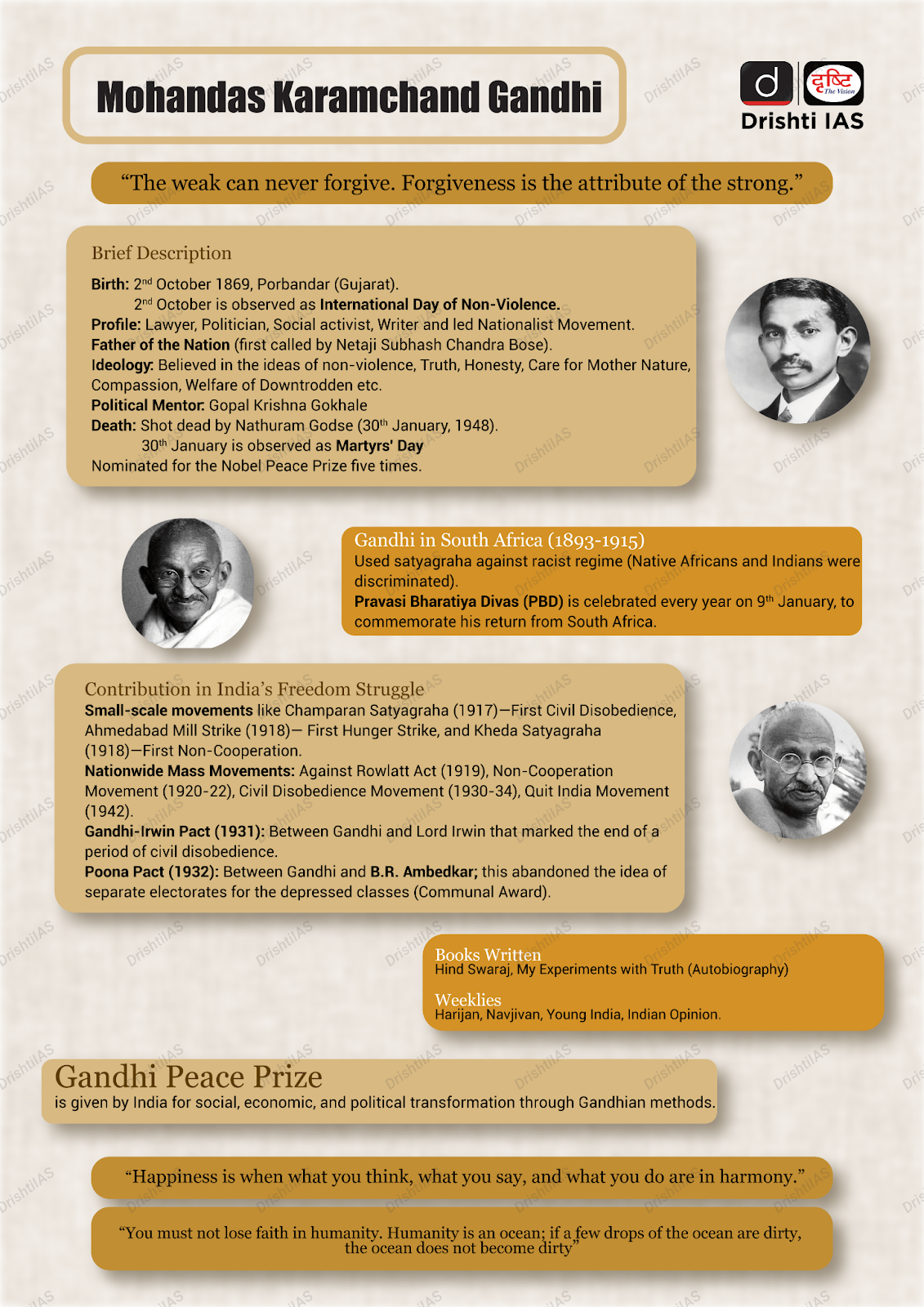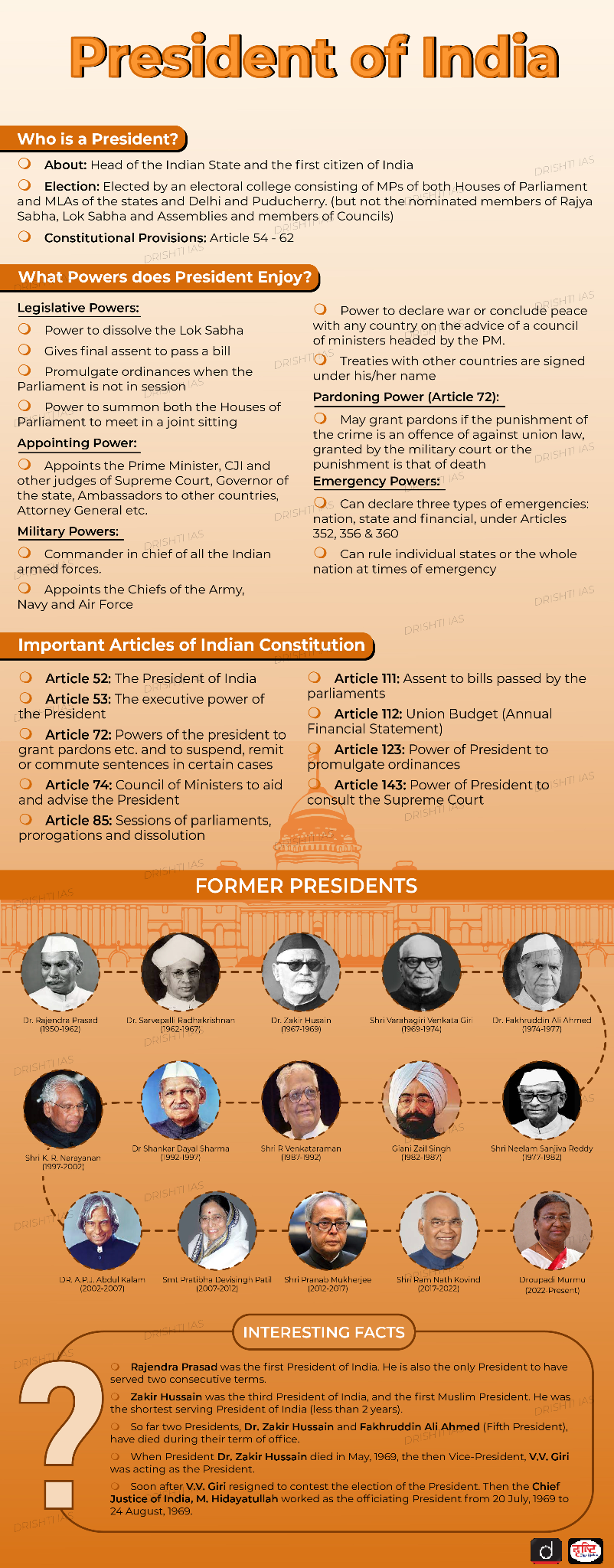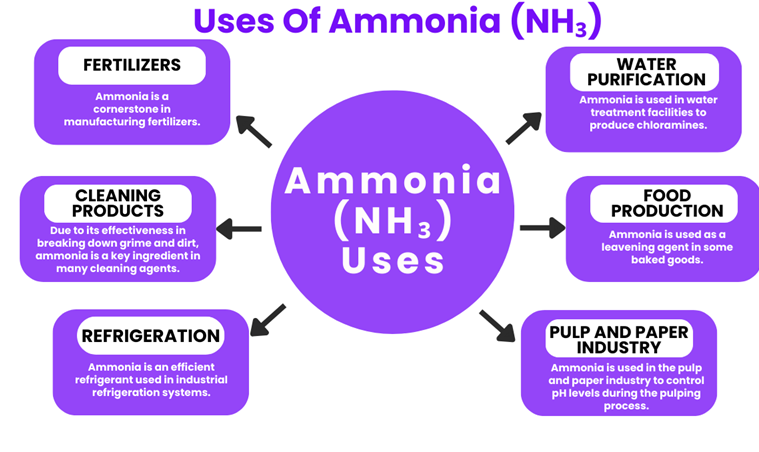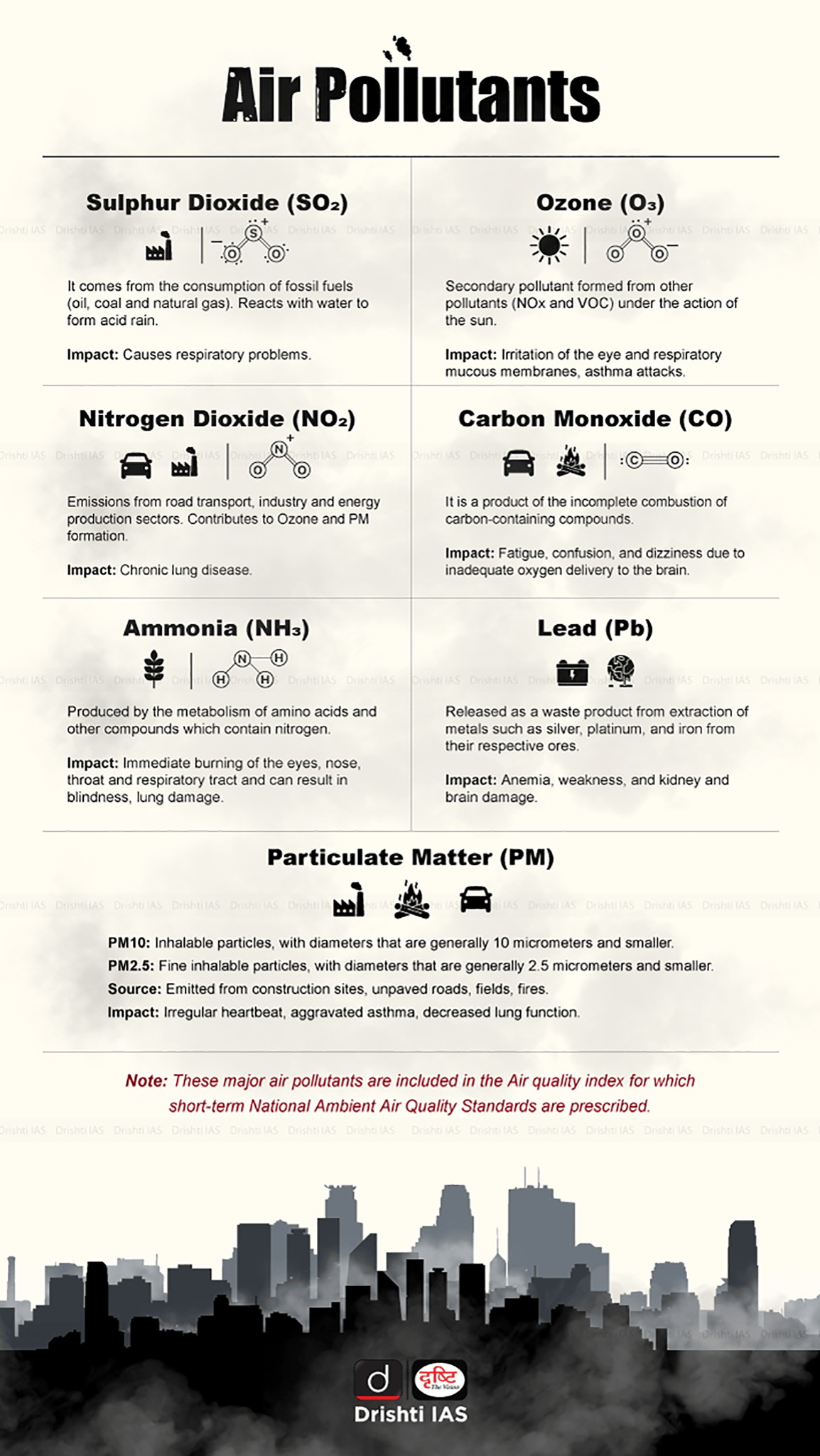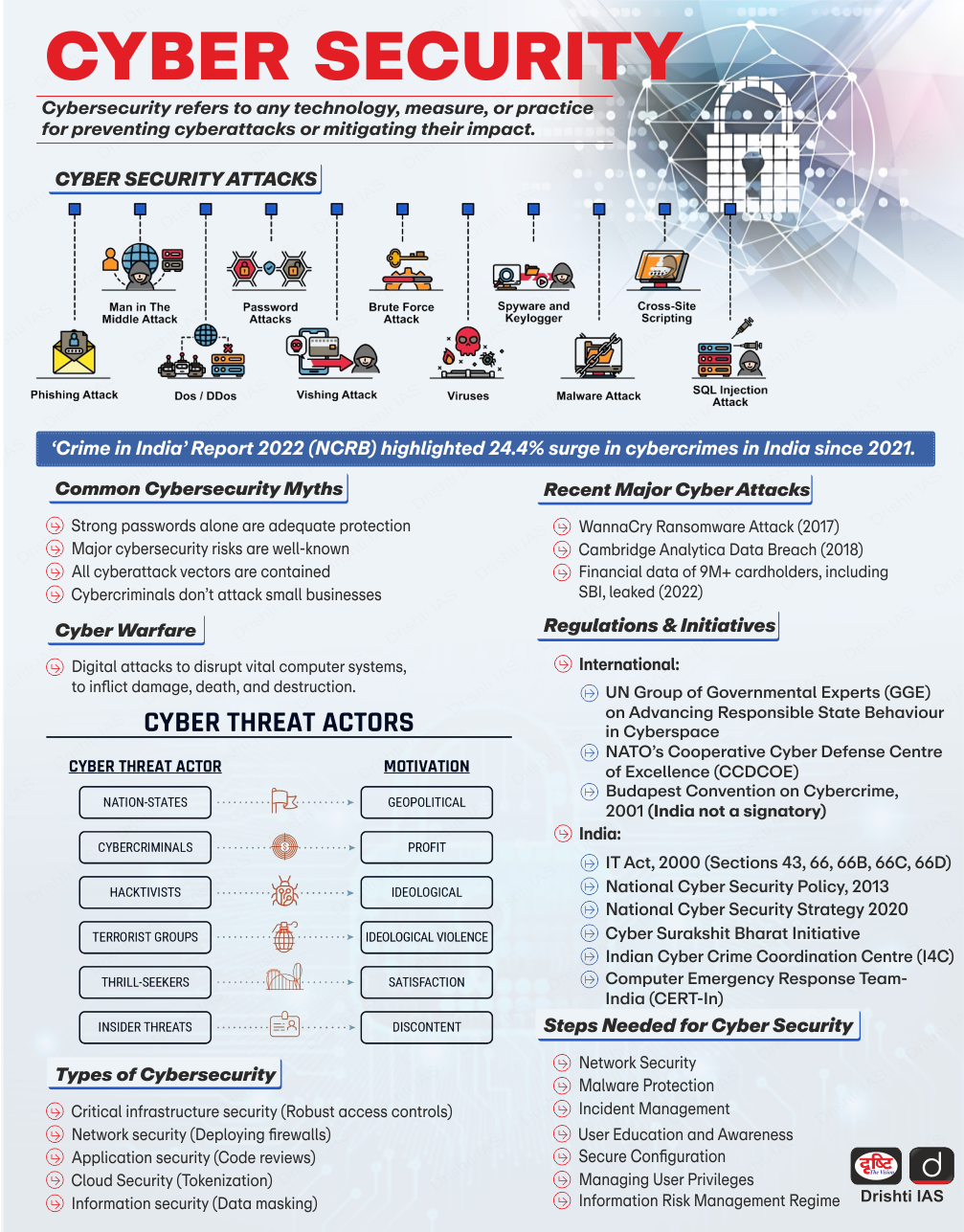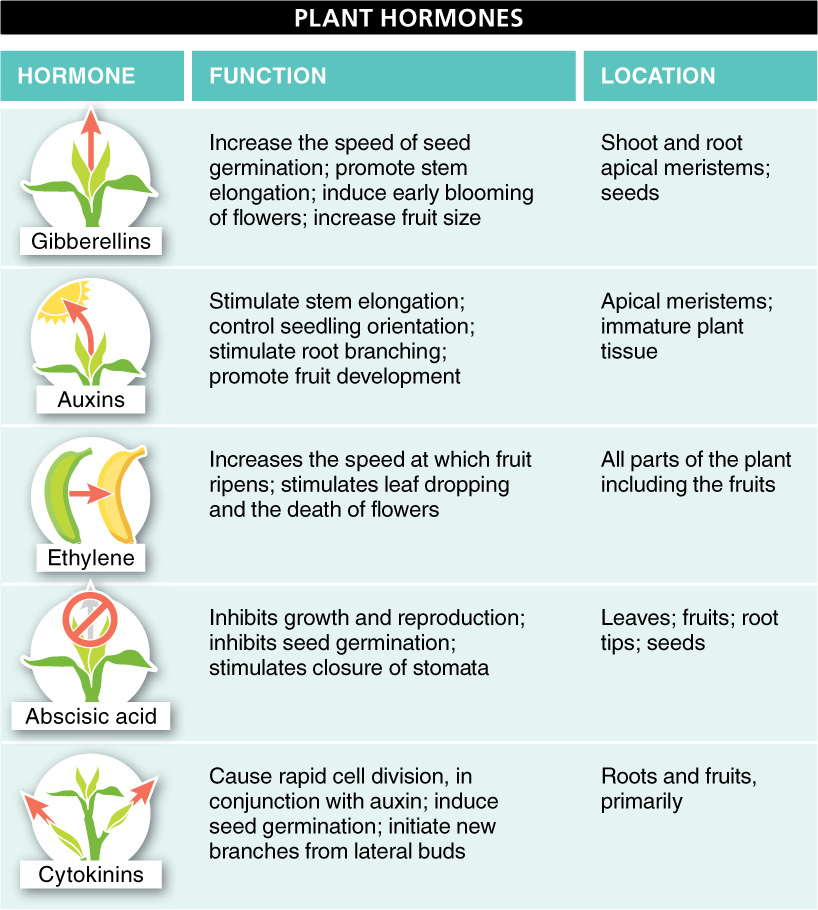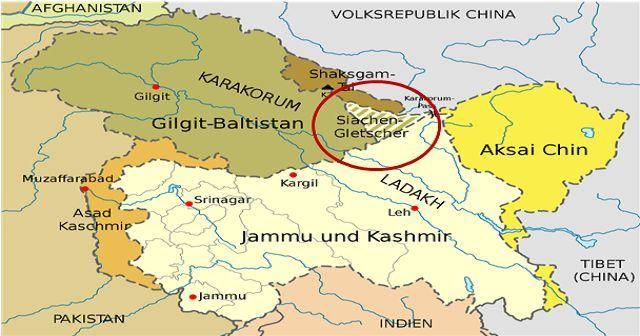Indian History
Ambedkar and Gandhi: Ideological Similarities & Differences
For Prelims: Dr. B.R. Ambedkar, Indian Constitution, Reserve Bank of India, Drafting Committee, Communism, Buddhism, Karl Marx, Round Table Conferences, Poona Pact, Drafting Committee, Buddhism, Bharat Ratna.
For Mains: Similarities and Difference Between Mahatma Gandhi & BR Ambedkar, Impact of Gandhi and Ambedkar on India’s constitution, Contribution of Dr. Bhim Rao Ambedkar, Relevance of Ambedkar in Present Times
Why in News?
As India reflects on the legacy of Dr. B.R. Ambedkar, on his 135th birth anniversary, revisiting his ideas on caste, democracy, and social reform offers valuable insights for building an inclusive and just society.
- His vision often converged with that of Mahatma Gandhi on the need for upliftment of the oppressed, yet differed sharply in approach.
What are the Key Areas of Ideological Convergence between B.R. Ambedkar and Mahatma Gandhi?
- Rejection of Violent Revolution and Communism:
- Both Ambedkar and Gandhi opposed communism’s focus on class struggle and violence.
- Gandhi criticized "Bolshevism" for its violent methods, advocating non-violence and moral persuasion.
- Similarly, Ambedkar condemned communism for seeking "short cuts" to progress, stressing the need for a sustained, non-violent struggle for justice and equality.
- Ambedkar, in Buddha or Karl Marx (1956), prioritized Buddha's message of compassion and moral progress over Marxist coercion, while Gandhi emphasized non-violence as the highest principle, stating, "There is no road to peace, peace is the road."
- Gandhi emphasized that the means must align with the ends, rejecting the idea that "the ends justify the means."
- Both Ambedkar and Gandhi opposed communism’s focus on class struggle and violence.
- Emphasis on Human Dignity and Social Justice:
- Both Gandhi and Ambedkar aimed for a just society grounded in dignity and compassion, though through different approaches.
- Gandhi focused on Sarvodaya (upliftment of all), while Ambedkar emphasized Bahujan Hitay (welfare of the majority).
- Both Gandhi and Ambedkar aimed for a just society grounded in dignity and compassion, though through different approaches.
- Role of Ethics in Public Life:
- Both Gandhi and Ambedkar emphasized the importance of ethics in public life. Gandhi's politics were based on moral idealism, while Ambedkar, though a rationalist, recognized the role of ethics in governance.
- Both believed that character and morality were essential for public service and leadership.
- Both Gandhi and Ambedkar emphasized the importance of ethics in public life. Gandhi's politics were based on moral idealism, while Ambedkar, though a rationalist, recognized the role of ethics in governance.
- Moral Politics:
- Initially, Ambedkar criticized Gandhi’s moral politics, calling them “hollow and noisy” and “dishonest.” However, later Ambedkar recognized the importance of individual morality, quoting Buddha on self-upliftment and non-violence, a principle similar to Gandhi’s vision of swaraj.
What were the Ideological Differences between Gandhi and Ambedkar?
- Caste and Varna System:
- Ambedkar called for the total annihilation of caste and strongly criticized Hindu texts like Manusmriti for legitimizing caste oppression. In "Annihilation of Caste” (1936), he described the Hindu social order as a “veritable chamber of horrors.”
- Gandhi acknowledged the social harm caused by the caste system, but didn't fully reject Manusmriti as he considered the caste system as a distortion of true Hinduism, viewing the Manusmriti as a text with both valuable and flawed aspects.
- Gandhi opposed untouchability and initially supported a reformed varna system, later advocating for the abolition of caste in Harijan (1936), stating "caste has to go."
- He coined the term Harijans for Dalits, which Ambedkar rejected as patronizing.
- Ambedkar called for the total annihilation of caste and strongly criticized Hindu texts like Manusmriti for legitimizing caste oppression. In "Annihilation of Caste” (1936), he described the Hindu social order as a “veritable chamber of horrors.”
- Separate Electorates for Dalits:
- Ambedkar supported separate electorates for the Depressed Classes to secure their political representation and rights.
- Gandhi opposed it, fearing it would divide Hindu society. His fast unto death led to the Poona Pact (1932), which replaced separate electorates with reserved seats for Dalits in joint electorates.
- In "What Congress and Gandhi Have Done to the Untouchables," Dr Ambedkar criticizes Gandhi and the Congress for failing to address the structural inequalities faced by Dalits.
- He argues that Gandhi's focus on moral reforms overlooked the need for legal and political measures to ensure Dalit emancipation.
- Religion and Social Reform:
- Ambedkar saw Hinduism as inherently discriminatory and converted himself to Buddhism in 1956, advocating liberty, equality, and fraternity.
- Gandhi treated religion as a moral guide, championing Sarva Dharma Sambhava (equal respect for all religions), but his defense of some Hindu traditions (such as Varna system, the term Harijan for Dalits, and Manusmriti) was criticized by reformers like Ambedkar.
- While Gandhi, Aurobindo, and Tagore drew inspiration from Hinduism, Ambedkar’s ideas were rooted in Buddhism.
- Navayana Buddhism was founded by Ambedkar in 1956 as a Dalit Buddhist movement in India.
- Means of Social Transformation:
- Ambedkar advocated for social reforms through legal and constitutional means, asserting that true political freedom could only be achieved after establishing social equality and justice.
- Gandhi emphasized personal morality, non-violence (ahimsa), and spiritual awakening (Swaraj) as means of societal transformation.
- Role of the State and Constitution:
- Ambedkar supported state-led affirmative action to rectify historical injustices, emphasizing that "Democracy is not a form of government, but a form of social organization."
- Gandhi advocated for Gram Swaraj (village self-rule) and minimal state intervention, emphasizing community self-reliance and moral development over bureaucratic governance.
- Economic Models:
- Ambedkar advocated for state socialism, planned development, and economic rights like land reforms and equal wages. He proposed state ownership of key industries in the States and Minorities memorandum (1947).
- Gandhi: Propounded trusteeship theory, where the wealthy act as custodians of public wealth. Favoured small-scale industries and swadeshi over Western industrialism.
|
Read More: Dr. B.R. Ambedkar Who was Dr. BR Ambedkar?, What are Dr. B.R. Ambedkar's Contributions? Mahatma Gandhi: What are the Major Gandhian Ideologies & Its Role in Today’s Context? |
Government’s Tribute to Dr. B.R. Ambedkar
- Bharat Ratna (1990): Conferred posthumously as India’s highest civilian award for his immense contribution to nation-building.
- Ambedkar Circuit (Panchteerth): Development of five key sites linked to his life—Mhow (birthplace), London (Shiksha Bhoomi), Nagpur (Deeksha Bhoomi), Mumbai (Chaitya Bhoomi), and Delhi (Mahaparinirvan Bhoomi).
- BHIM App: Launched in his name to promote digital payments and financial inclusion.
- Dr. Ambedkar Centres of Excellence (DACE): Set up in 31 Central Universities to offer free UPSC coaching to Scheduled Caste students.
- ASIIM Scheme: Ambedkar Social Innovation and Incubation Mission supports SC youth entrepreneurs through startup funding.
- National Monuments: Sites like Sankalp Bhumi (Vadodara) and his school in Satara proposed for national monument status.
- Constitution Day (26th Nov): Observed since 2015 to honor his legacy as the chief architect of the Indian Constitution.
- Ambedkar Jayanti: His birth anniversary, 14th April is observed as Ambedkar jayanti, a national holiday honoring his contributions to social justice, Dalit rights, and the Indian Constitution.
Conclusion
Gandhi and Ambedkar, despite differing in methods, aimed for a just and inclusive India. Fundamental differences in means remained: Gandhi sought reform via moral appeal, while Ambedkar advocated for state-led social engineering. Together, their legacies offer a balanced lens to address caste, inequality, and democratic values today.
|
Drishti Mains Question: Gandhi and Ambedkar had differing ideologies but shared a commitment to social justice. Compare their approaches and assess their impact on India’s constitutional and social vision. |
UPSC Civil Services Examination, Previous Year Questions (PYQs)
Prelims
Q. Which of the following parties were established by Dr. B. R. Ambedkar? (2012)
- The Peasants and Workers Party of India
- All India Scheduled Castes Federation
- The Independent Labour Party
Select the correct answer using the codes given below:
(a) 1 and 2 only
(b) 2 and 3 only
(c) 1 and 3 only
(d) 1, 2 and 3
Ans: (b)
Mains:
Q. Mahatma Gandhi and Dr. B.R. Ambedkar, despite having divergent approaches and strategies, had a common goal of amelioration of the downtrodden. Elucidate. (2015)

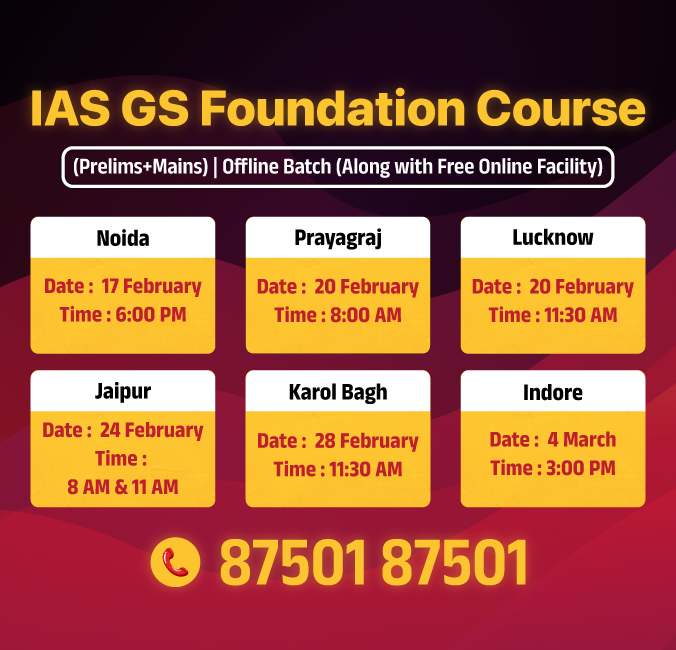
Indian Polity
SC Sets a Deadline for Presidential Decision on Reserved Bills
For Prelims: Supreme Court of India, Article 201, Article 143, President, Governor
For Mains: Role of President and Governors in Indian Federalism, Constitutional Provisions Regarding State Bills and Presidential Assent, Powers of the President and the Governor
Why in News?
The Supreme Court (SC) of India, in the State of Tamil Nadu vs. Governor of Tamil Nadu,2023 has, for the first time, laid down a 3-month deadline for the President to decide on Bills referred by the Governor under Article 201 of the Constitution.
What is the SC’s Verdict on the President’s Role in State Bills?
- Article 201: It states that “when a Bill is reserved by a Governor for the consideration of the President, the President shall either assent to the Bill or withhold assent therefrom."
- The SC noted that Article 201 provides no specific timeline for Presidential assent, and such delays can stall legislative processes, leaving state Bills in “indefinite and uncertain abeyance.”
- It emphasized that inaction violates the constitutional principle of non-arbitrariness in the exercise of power.
- Time Limit: The SC held that the President cannot exercise an “absolute veto” by indefinitely delaying assent. A decision must be made within three months, and any delay must be reasoned and communicated to the State.
- Withholding assent must be based on sound and specific grounds, not done arbitrarily.
- If the President fails to act within the time limit, States can file writ petitions to compel a decision, seeking a Writ of Mandamus from the Court.
- Additionally, the SC stated that under Article 143, if a bill is reserved by the Governor on the grounds of unconstitutionality, the President ought to seek the Supreme Court’s opinion.
- Although it is not mandatory, the reference to the SC in such cases carries high persuasive value.
- The SC clarified that unlike the Governor, who must assent to a State Bill if it is passed again after being returned. The President is not constitutionally bound to do so under Article 201.
- This is because Article 201 applies only in exceptional cases where state legislation has potential national implications.
- References: The SC referred to the 2016 Office Memorandums issued by the Ministry of Home Affairs, which prescribed a three-month timeline for decisions on state bills reserved for the President.
- The Court invoked recommendations of the Sarkaria Commission (1988) and Punchhi Commission (2010), both of which called for time-bound decisions on reserved Bills.
What is the Governor’s Role in the Passage of State Bills?Click here to Read: Governors’ Role in State Bills |
What are the Constitutional and Functional Differences between the President and the Governor?
|
Domain |
President |
Governor |
|
Legislative Powers |
|
|
|
Ordinance Making Power |
|
|
|
Pardoning Power |
|
|
|
Emergency Powers |
|
|
|
Diplomatic & Military Roles |
|
|
|
Discretionary Powers |
|
|
What are the Key SC Judgements Related to the Powers of the Governor and the President?
- President:
- S. R. Bommai v. Union of India (1994): SC ruled that the President's Rule is subject to judicial review and cannot be imposed arbitrarily.
- Kehar Singh v. Union of India (1988): The SC ruled that the President's pardoning power is independent of the judiciary.
- However, it can be reviewed to ensure procedural fairness, focusing on adherence to constitutional principles and procedural requirements rather than the merits of the decision.
- R.C. Cooper v. Union of India (1970): The SC held that the President’s satisfaction regarding the necessity of an ordinance is not immune from judicial review and can be challenged.
- It also held that an ordinance is subject to the same constitutional limitations as an Act of Parliament and cannot violate any fundamental rights or other provisions of the Constitution.
- Governor:
- S. R. Bommai v. Union of India (1994): The SC ruled that the Governor's recommendation for President's Rule is subject to judicial review and cannot be imposed arbitrarily.
- Shamsher Singh v. State of Punjab (1974): SC emphasized that the Governor must act on the advice of the Council of Ministers, except in situations where the Constitution requires the Governor to act in his discretion.
- Rameshwar Prasad v. Union of India (2006):: The SC declared the dissolution of the Bihar Legislative Assembly unconstitutional, emphasizing that the Governor’s powers are not absolute and must be exercised in accordance with constitutional principles.
- The judgement reinforced the importance of judicial review in overseeing executive actions,
Conclusion
The SC’s interpretation on Article 201 establishes a clear three-month deadline for the President to act on state bills, enhancing accountability and reducing arbitrary delays. This decision strengthens federal governance by empowering States to challenge undue delays. It ensures transparency and safeguards against the misuse of executive powers in the legislative process.
|
Drishti Mains Question: Discuss the significance of the Supreme Court's ruling on the President’s role in state Bills. How does this decision align with the constitutional principle of non-arbitrariness? |
| Read more: SC Verdict on Governors' Powers over State Bills |
UPSC Civil Services Examination Previous Year Questions (PYQs)
Prelims:
Q. Which of the following are the discretionary powers given to the Governor of a State? (2014)
- Sending a report to the President of India for imposing the President’s rule
- Appointing the Ministers
- Reserving certain bills passed by the State Legislature for consideration of the President of India
- Making the rules to conduct the business of the State Government
Select the correct answer using the code given below:
(a) 1 and 2 only
(b) 1 and 3 only
(c) 2, 3 and 4 only
(d) 1, 2, 3 and 4
Ans: (b)
Q. Which of the following is/are the exclusive power(s) of Lok Sabha?
- To ratify the declaration of Emergency
- To pass a motion of no-confidence against the Council of Ministers
- To impeach the President of India
Select the correct answer using the code given below:
(a) 1 and 2
(b) 2 only
(c) 1 and 3
(d) 3 only
Ans: (b)
Mains:
Q. Discuss the essential conditions for exercise of the legislative powers by the Governor. Discuss the legality of re-promulgation of ordinances by the Governor without placing them before the Legislature. (2022)
Q. Though the federal principle is dominant in our constitution and that principle is one of its basic features, but it is equally true that federalism under the Indian Constitution leans in favour of a strong Center, a feature that militates against the concept of strong federalism. Discuss. (2014)

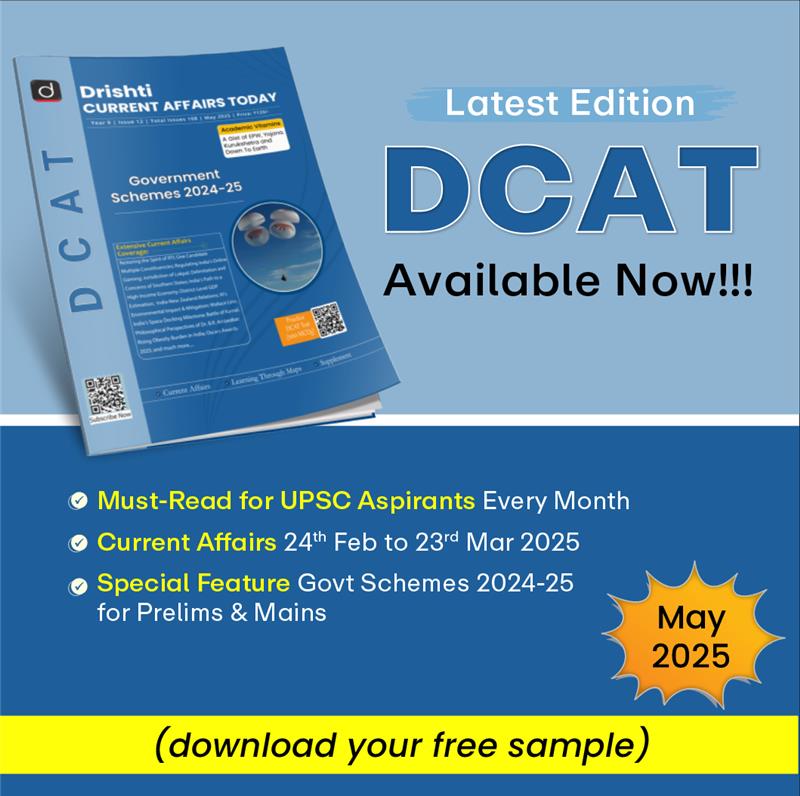
Disaster Management
Ammonia Gas Leakage
For Prelims: Ammonia, Battery Electric Vehicles, Energy Density of Ammonia, Haber-Bosch process, Green Hydrogen/ Green Ammonia Policy, Occupational Safety, Health and Working Conditions Code, 2020, Labour Bureau, International Labour Organisation, ILO Conventions.
For Mains: Advantages and Challenges Related to Ammonia as a Fuel, Occupational safety and health in India - Analysis, Challenges and Steps that can be taken, Framework Regarding Labours in India, Grey Areas Related to the Current Labour Reforms
Why in News?
An ammonia gas leak at an ice factory in Ratlam, Madhya Pradesh, triggered panic among residents. Such chemical incidents highlight the recurring challenges of industrial safety and disaster preparedness in India.
Ammonia & its Industrial Applications
- Ammonia (NH₃) is a colorless gas with a sharp smell, widely used in industry and naturally found in the environment and human body.
- It is produced by the Haber-Bosch process (N₂ + 3H₂ → 2NH₃) under high temperature and pressure in the presence of a catalyst:
- Its concentrated form is corrosive and can cause burns or explode under high heat. It is stored as a compressed liquid.
- It is highly water-soluble and forms ammonium hydroxide in contact with water.
- It has 9 times the energy density of Li-ion batteries and 3 times that of compressed hydrogen, making it a promising carbon-free energy carrier.
- Key Applications:
What are Industrial & Chemical Disasters?
- Industrial Disaster: An industrial disaster is a significant accident at an industrial site that results in extensive damage, injuries, or fatalities.
- It can result from various causes, including chemical, mechanical, civil, or electrical processes, as well as accidents, negligence, or incompetence.
- Types:
- Chemical disasters, Explosions, Mining disasters, Falling objects, Radiological incidents.
- According to the National Disaster Management Authority (NDMA), India reported 130 significant chemical accidents, resulting in 259 deaths and 563 major injuries over the last decade.
- Chemical Disaster: Chemical disasters are a type of industrial disaster involving the accidental release of hazardous chemicals, leading to mass casualties, long-term environmental damage, and socio-economic disruptions.
- They may result from industrial accidents, improper handling or storage of chemicals, or failure of safety systems.
- Notable Examples:
- Chennai Ammonia Leak (2024): Caused by a pipeline damaged during Cyclone Michaung.
- Vizag Gas Leak (2020): Styrene gas leak at LG Polymers, Visakhapatnam.
- Bhopal Gas Tragedy (1984): Methyl isocyanate leak from Union Carbide, causing mass casualty.
What are the Causes and Impact of Industrial Accidents?Click Here to Read: Causes of Industrial Accidents in India Click Here to Read: Consequences of Industrial and Chemical Accidents |
What are the Legal Safeguards against Chemical and Industrial Disasters in India?
- The Bhopal Gas Leak (Processing of Claims) Act, 1985
- The Environment Protection Act (EPA),1986
- National Environment Appellate Authority (NEAA) Act, 1997: Established the NEAA to hear appeals on environmental clearances ensuring transparency and accountability.
- Public Liability Insurance Act (PLIA), 1991: It mandates insurance for industries handling hazardous substances, ensuring immediate relief to victims of industrial accidents.
- Hazardous Waste (Management, Handling and Transboundary Movement) Rules, 1989: It imposes obligations on industries to identify accident-prone areas, undertake preventive measures, and report hazards to authorities.
- Additional Measures:
- NDMA Guidelines on Chemical Disasters: These provide a comprehensive roadmap for disaster risk reduction, mitigation, and preparedness specific to chemical hazards.
- Factories Act, 1948 contains safety provisions for workers in manufacturing units, including handling hazardous substances.
- Insecticides Act, 1968 regulates the import, manufacture, sale, and use of insecticides to prevent risk to humans and animals.
What are the Key International Conventions and Safeguards Related to Chemical and Disasters?
- Sendai Framework for Disaster Risk Reduction 2015-2030
- UN Convention on the Transboundary Effects of Industrial Accidents (1992) provides a legal framework for international cooperation in preventing, preparing for, and responding to industrial accidents that may have cross-border impacts.
- Basel Convention on the Control of Transboundary Movements of Hazardous Wastes and Their Disposal (1989) regulates transboundary movement of hazardous wastes and ensures their environmentally sound disposal.
- Rotterdam Convention (2004) promotes shared responsibility in the international trade of hazardous chemicals and pesticides through the Prior Informed Consent (PIC) procedure.
- Strategic Approach to International Chemicals Management (SAICM), adopted in 2006, is a policy framework to promote chemical safety worldwide.
- UNEP’s Flexible Framework for Chemical Accident Prevention and Preparedness (CAPP), 2006 adopts a flexible approach to help countries, especially developing ones, build programs to prevent and prepare for chemical accidents.
- The OECD Programme on Chemical Safety and Biosafety (mid 1980s) deals with the safe use of chemicals, nanomaterials, pesticides, biocides, and products of modern biotechnology.
ILO Recommendations on Industrial Disaster PreventionClick Here to Read: What are ILO Recommendations on Industrial Disaster Prevention? |
What Measures can India Adopt to Reduce the Vulnerability of Chemical Disasters?
- Risk Mapping and Hazard Zonation:
- Conduct GIS-based hazard mapping of all Major Accident Hazard (MAH) units to identify vulnerable zones and mandate the creation of safety buffer zones, especially in densely populated industrial areas. This aligns with SDG 11 (Sustainable Cities and Communities) and SDG 3 (Good Health and Well-being), ensuring safer urban planning and reduced health risks.
- Institutional and Policy Reforms:
- Strengthen NDMA’s Chemical Disaster Management Guidelines through periodic review and alignment with global standards.
- Establish specialized institutions at national and state levels for training, planning, and integrating chemical disaster response into District and State Disaster Management Plans with clear SOPs and regular mock drills.
- Effective Enforcement:
- Enforce laws like the Factories Act, EP Act, The Manufacture, Storage and Import of Hazardous Chemicals (MSIHC) Rules, 1989 and Public Liability Insurance (PLI) Act with stringent penalties for violations.
- Ensure the presence of Emergency Response Centres (ERCs) integrated with police, fire, SDRF/NDRF, and health services, and mandate off-site emergency plans supervised by district authorities.
- Technological Surveillance:
- Deploy real-time monitoring, early warning systems, and surveillance mechanisms for chemical storage, handling, and transport.
- Simultaneously, promote industry-wide adoption of Hazard and Operability Studies (HAZOP) and Hazard Analysis (HAZAN) to ensure early identification and mitigation of potential risks.
- Incentives Support:
- To incentivise safety improvements, financial aid like tax breaks or subsidies can be offered for upgrading infrastructure and adopting new technologies.
Occupational Safety, Health and Working Conditions Code, 2020
- Safety Responsibilities: It outlines the duties of employers and employees to ensure workplace safety.
- Industry-Specific Standards: Mandates customized safety norms across various sectors.
- Focus on Worker Welfare: Ensures regulation of working hours, health conditions, leaves, and other welfare measures.
- Protection for Contract Workers: Recognizes and safeguards the rights of contractual and migrant workers.
- Gender Inclusivity: Enables women to be employed in all types of work across all establishments.
Conclusion
The chemical & industrial accidents in India underscores the urgent need for robust chemical disaster preparedness. As industrialization grows, India must prioritize institutional vigilance, community awareness, and technology-driven safety measures. A culture of "zero tolerance" for safety lapses is essential to protect lives, environment, and ensure sustainable development.
UPSC Civil Services Examination, Previous Year Question (PYQ)
Prelims:
Q1. In India, why are some nuclear reactors kept under “IAEA safeguards” while others are not? (2020)
(a) Some use uranium and others use thorium
(b) Some use imported uranium and others use domestic supplies
(c) Some are operated by foreign enterprises and others are operated by domestic enterprises
(d) Some are State-owned and others are privately owned
Ans: (b)
Mains:
Q1. With growing energy needs should India keep on expanding its nuclear energy programme? Discuss the facts and fears associated with nuclear energy. (2018)


Important Facts For Prelims
Indoor Air Quality
Why in News?
Indoor air pollution is a growing concern in India, especially in urban areas where people spend 70–90% of their time indoors. Yet, discussions around Indoor Air Quality (IAQ) remain limited, with most policy focus still on outdoor pollution.
What is Indoor Air Quality?
- Definition: IAQ refers to the quality of air inside and around buildings, impacting the health and comfort of occupants.
- Common Indoor Air Pollutants:
- Carbon Monoxide (CO): A toxic odorless gas produced from incomplete combustion.
- Formaldehyde: Found in wood products, glues, paints, and furnishings; a known carcinogen.
- Asbestos: Found in older construction materials used for making fireproof or incombustible building components; exposure can lead to serious lung diseases.
- Radon: A radioactive gas that seeps from the ground into buildings.
- Lead: Found in old paints, plumbing, and ceramics.
- Mould: A microorganism and type of fungus that thrives in damp places, and humid environments.
- Pesticides: Used indoors for pest control, contributing to chemical exposure.
- Smoke: From cigarettes or cookstoves, carrying harmful toxins.
- Allergens: Dust mites, pet dander, and pollen trapped in carpets and furniture.
- Reasons for Deteriorating IAQ: Outdoor pollutants like Particulate Matter (PM2.5) enter poorly sealed or ventilated buildings through gaps in poorly insulated structures.
- Indoor activities such as cooking, smoking, use of incense sticks, and chemical cleaning.
- Overcrowded housing in Indian cities increases pollutant levels due to limited space for dispersion.
- The lack of public awareness and regulatory oversight on IAQ standards allows harmful practices and materials to persist unchecked.
- Impact: India recorded the highest average annual indoor PM2.5 levels (55.18 μg/m³), as revealed in Dyson’s Global study, followed by China, Turkey, UAE, and South Korea.
- Globally, household air pollution causes 3.2 million premature deaths annually (WHO), as pollutants from solid fuels and kerosene damage the lungs, impair immunity, and reduce blood oxygen levels.
- Poor ventilation can lead to carbon dioxide build-up, resulting in “sick building syndrome.”
- Indoor air pollution is linked to noncommunicable diseases such as stroke, heart disease, Chronic obstructive pulmonary disease (COPD) and lung cancer. Women and children bear the heaviest health burden.
What are the Solutions to Indoor Air Pollution?
- Air Purifiers: Use air purifiers equipped with High Efficiency Particulate Air filters to trap particulate matter like PM2.5 and other harmful pollutants.
- Use of Indoor Plants: Certain indoor plants, like spider plants and peace lilies, can help purify the air by absorbing pollutants like formaldehyde and benzene.
- Use Clean Fuels and Technologies: Switch to cleaner alternatives like solar, electricity, biogas, liquefied petroleum gas (LPG), natural gas, or alcohol fuels for cooking and heating.
- Low-VOC Materials: Reducing the use of volatile organic compounds (VOCs) in building materials like paints, varnishes, and furnishings can significantly improve indoor air quality.
- Health-Focused Building Practices: Establish health-focused building construction guidelines in collaboration with the Indian Green Building Council (IGBC), aligning with Eco-Niwas Samhita (ENS), to ensure suitability for healthy living.
UPSC Civil Services Examination, Previous Year Question (PYQ)
Prelims
Q. In the context of proposals to the use of hydrogen enriched CNG (H-CNG) as fuel for buses in public transport, consider the following statements: (2019)
- The main advantage of the use of H-CNG is the elimination of carbon monoxide emissions.
- H-CNG as fuel reduces carbon dioxide and hydrocarbon emissions.
- Hydrogen up to one-fifth by volume can be blended with CNG as fuel for buses.
- H-CNG makes the fuel less expensive than CNG.Which of the statements given above is/are correct?
(a) 1 only
(b) 2 and 3 only
(c) 4 only
(d) 1, 2, 3 and 4
Ans: (b)
Q. Consider the following: (2019)
- Carbon monoxide
- Methane
- Ozone
- Sulphur dioxide
Which of the above are released into the atmosphere due to the burning of crop/biomass residue?
(a) 1 and 2 only
(b) 2, 3 and 4 only
(c) 1 and 4 only
(d) 1, 2, 3 and 4
Ans: (d)


Rapid Fire
Toxic Bloom Turns Sea Lions Aggressive
A toxic algal bloom off California’s coast has led to unprecedented aggression in sea lions, causing them to attack humans.
- Domoic acid, a neurotoxin produced by the diatom Pseudo-nitzschia, is responsible for altering the brain function of sea lions.
- It causes stress, muscle spasms, brain damage, and aggressive behavior in marine mammals.
- Domoic acid enters the food chain, harming marine life and posing a deadly risk to humans through contaminated seafood.
- Stronger winds (from global warming) cause upwelling and bring nutrient-rich water to the surface, fueling algal growth.
- Pollutant discharge and wildfire runoff (e.g., from Los Angeles wildfires) add nutrients that further feed the algae.
- Sea Lions: Sea lions (along with Seals and walruses) belong to a group of marine mammals called pinniped group (fin-footed marine mammals).
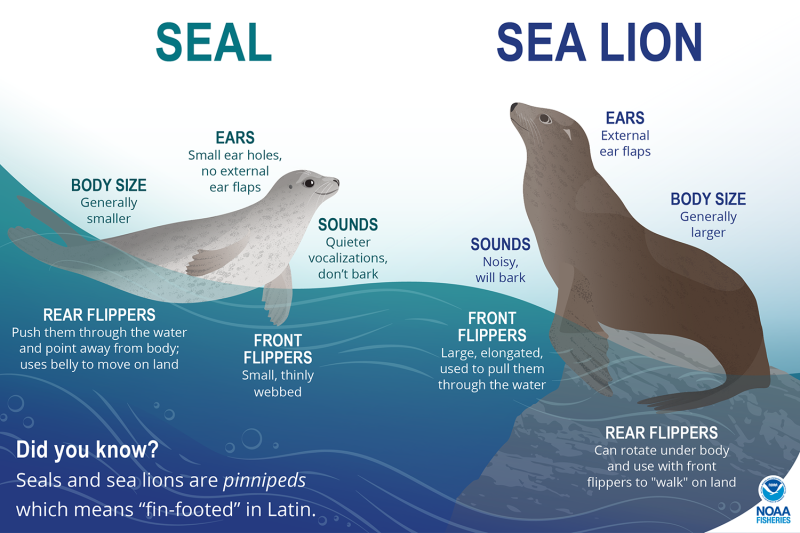
- They are found in large groups and known for their loud barking sounds.
- Spend most of their time in the ocean but come ashore for resting, mating, and pupping.
- They live mostly in Pacific waters.
| Read More: Great Seahorse Migration |


Rapid Fire
CAPTCHA
CAPTCHA (Completely Automated Public Turing test to tell Computers and Humans Apart) is a challenge-response test used to distinguish bots from human users, enhancing online security and protecting user data.
- Bots are automated software programs that perform repetitive online tasks.
- CAPTCHA:
- Origin: Developed in the early 2000s by Luis von Ahn to block bots, CAPTCHA began with distorted text (2003), evolved into reCAPTCHA (2009) using scanned book words, and later to Invisible reCAPTCHA (2014) by Google using behavioural analysis. Modern versions use image recognition, checkboxes, and interaction tracking.
- Advantages: It blocks bots preventing fake accounts, spam, and data theft, ensuring only human users access digital platforms.
- Applications: CAPTCHA is used in logins, registrations, transactions, comments, account recovery, and surveys to block bots and verify users. reCAPTCHA also aids in book digitisation.
- Disadvantages: It can hinder accessibility for disabled users, can be tedious for mobile users and be bypassed by advanced bots, impacting user experience.
- Other Cybersecurity Measures: Other measures include Two-Factor Authentication (2FA), adding a second verification layer via device codes, biometric verification using fingerprints or facial recognition, honeypots to trap bots; and behavioral biometrics that track typing or swipe patterns to distinguish humans from bots.
| Read More: Emerging Cyber Threats and Their Implications |


Rapid Fire
Ripening Agents Used for Fruits
Ripening of fruits is associated with the process of senescence or aging in plants. It involves changes in colour, texture, flavour, sugar content, and acidity, and is influenced by the ripening hormone ethylene.
Artificial Fruit Ripening Agents:
- Calcium Carbide: It releases toxic acetylene gas and may contain phosphorus, and arsenic (a carcinogenic substance)causing severe health issues.
- Its usage has been banned by FSSAI under Food Safety and Standards Regulations, 2011.
- Permitted Substances:
- Ethylene Gas: Approved by FSSAI up to 100 ppm (parts per million); triggers natural ripening. It must be applied in controlled ripening chambers and not in direct contact with fruits.
- Ethephon: Releases ethylene on breakdown and used for artificial ripening under regulated conditions.
- Ethereal: It is an ethylene-releasing compound used in controlled settings.


Rapid Fire
Siachen Day
Siachen Day (13th April) commemorates Operation Meghdoot, which marked India’s successful military control of the Siachen Glacier in 1984.
- Siachen: Located at around 20,000 feet in the Karakoram Range, is the longest glacier in this range and highest militarized zone globally. The Saltoro Ridge, part of the Karakoram, lies southwest of the Siachen Glacier.
- Siachen plays a crucial role in controlling routes from Gilgit-Baltistan to Leh and the Karakoram Pass.
- The Karachi Agreement of 1949 demarcated the boundary between India and Pakistan until a point called NJ9842, beyond which the line was left vague due to inhospitable terrain, stating it would run “thence North to the glaciers” (referring to the Siachen, Rimo, and Baltoro glaciers).
- Post-1972 Simla Agreement, the Line of Control (LoC) was formalized but did not address the area beyond NJ9842.
- In the 1980s, Pakistan sought to legitimize its claim over the Saltoro Ridge and beyond Siachen, aiming for direct connectivity to China and strategic control over the Ladakh region, posing a significant threat to India.
- Operation Meghdoot: On 13th April 1984, under Prime Minister Indira Gandhi, India launched Operation Meghdoot, securing control of the Siachen Glacier and Saltoro Ridge, including key passes like Bilafond La and Sia La.
- This move preempted Pakistan’s presence, ensuring strategic oversight of the Ladakh region and blocking access to the Shaksgam Valley.
- Operation Meghdoot involved airlifting troops and supplies, with Indian Air Force helicopters playing a crucial role. It marked the first military assault in the world's highest battlefield.
| Read more: Operation Meghdoot |




